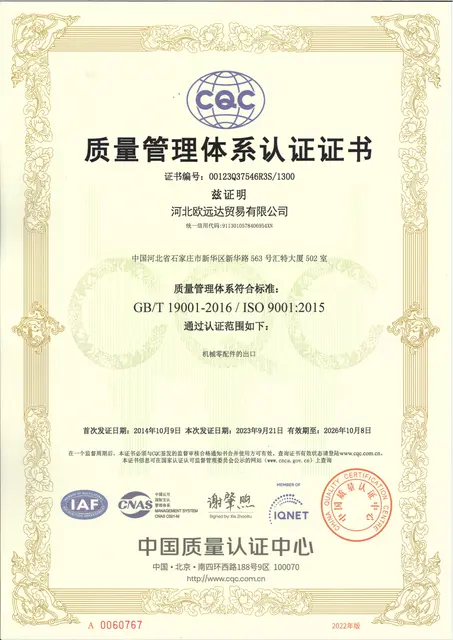Mobile:+86-311-808-126-83
Email:info@ydcastings.com
Benefits of Die Casting in Manufacturing Processes and Product Design
Advantages of Die Casting
Die casting is a specialized manufacturing process that has gained immense popularity in the production of metal parts. It involves forcing molten metal into a mold cavity under high pressure, resulting in intricate shapes with excellent dimensional accuracy. This method has several advantages over other manufacturing processes, making it a preferred choice for many industries, including automotive, aerospace, and consumer goods. In this article, we will explore the various advantages of die casting in detail.
1. High Precision and Accuracy
One of the most significant advantages of die casting is its ability to produce parts with remarkable precision and accuracy. The use of high-pressure techniques ensures that the molten metal fills every aspect of the mold, creating components with tight tolerances and intricate geometries. This level of precision is critical in industries such as automotive and aerospace, where even the slightest deviation can lead to malfunction or safety issues.
2. Superior Surface Finish
Die-cast components typically exhibit a superior surface finish compared to parts produced by other manufacturing methods. The smooth surfaces resulting from the die casting process reduce or eliminate the need for additional machining or finishing processes, which can save both time and costs. As a result, manufacturers can deliver products that meet aesthetic and functional requirements more efficiently.
3. Enhanced Mechanical Properties
The die casting process can improve the mechanical properties of the metal parts produced. The rapid cooling of molten metal in the die results in a refined microstructure, leading to enhanced strength and durability of the final product. Components made through die casting often demonstrate excellent tensile strength, making them suitable for high-stress applications. This advantage is particularly important in the automotive industry, where components are subjected to significant mechanical stress.
advantages of die casting

Die casting allows for a high degree of design flexibility. Manufacturers can create complex shapes and intricate patterns that would be difficult, if not impossible, to achieve using traditional manufacturing methods. This flexibility enables designers to innovate and create unique products that meet specific market demands. Furthermore, the ability to incorporate features like ribs, bosses, and other design elements within the mold can lead to more efficient use of materials and improved product performance.
5. Economical for High Volumes
While the initial setup cost for die casting molds can be significant, this process becomes highly economical when producing large volumes of parts. The efficiency of the die casting process allows manufacturers to produce thousands of identical parts quickly. As a result, the per-unit cost decreases dramatically with higher production volumes, making it an ideal choice for mass production scenarios.
6. Material Versatility
Die casting can be performed using a wide range of metals, including aluminum, zinc, magnesium, and copper alloys. Each of these materials offers unique properties, allowing manufacturers to choose the appropriate metal based on the specific application requirements. This versatility makes die casting suitable for various industries, from electronics to heavy machinery.
7. Waste Reduction
The die casting process is known for its efficiency and waste reduction capabilities. The process generates minimal scrap material compared to other manufacturing methods, such as machining. Additionally, excess metal from the die casting process can often be recycled and reused in subsequent casts, further minimizing waste and reducing production costs.
Conclusion
The advantages of die casting make it an attractive manufacturing process for producing high-quality, precision metal parts. With benefits such as high accuracy, superior surface finish, enhanced mechanical properties, design flexibility, and cost-effectiveness for large volumes, die casting has established itself as a go-to method in many industries. As technology continues to advance, the potential applications and benefits of die casting are likely to expand, solidifying its role as a leading manufacturing technique in the modern world.
-
Impeller Technology That Powers Precision in Pump SystemsNewsMay.22,2025
-
Valve Durability Begins with Quality Cast Iron ComponentsNewsMay.22,2025
-
Performance Cooling with Advanced Automobile Water Pump SolutionsNewsMay.22,2025
-
How Motor Housing and Oil Pans Shape Engine PerformanceNewsMay.22,2025
-
How Metal Castings Drive Modern Manufacturing EfficiencyNewsMay.22,2025
-
Exploring the Engineering Behind Valve Body CastingsNewsMay.22,2025











